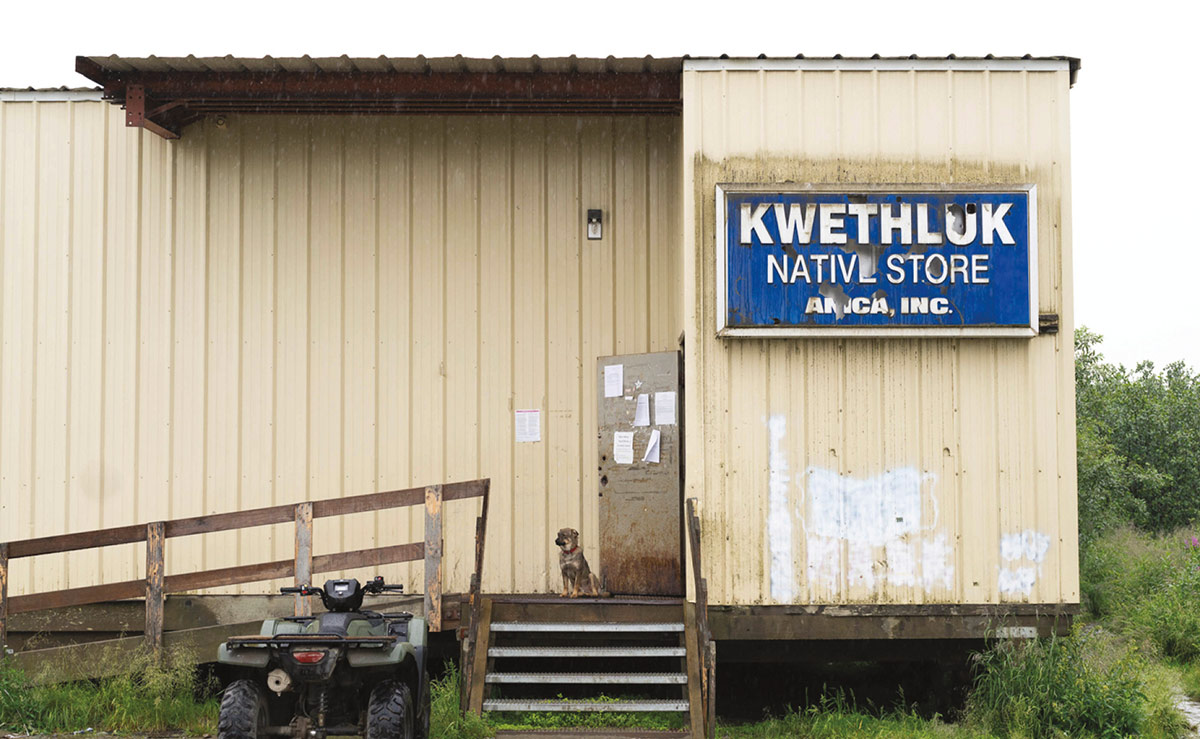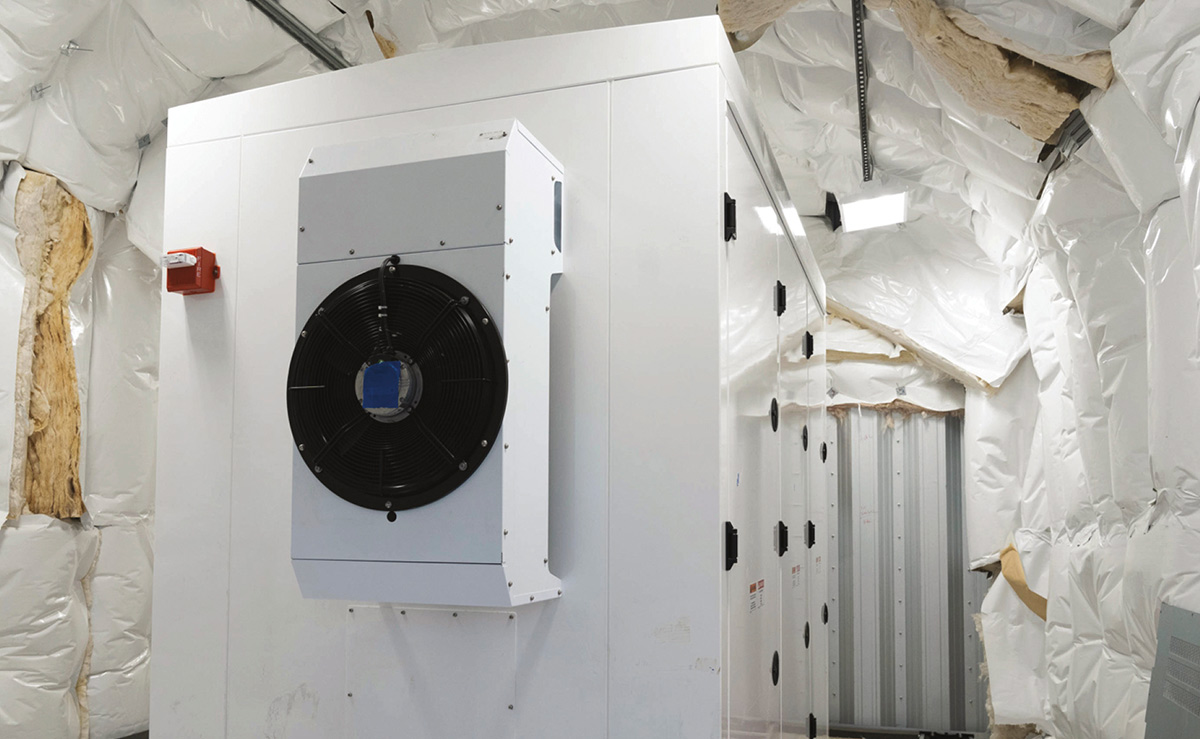wethluk, a Yup’ik community of 812 residents about 12 miles east of Bethel, has some of the highest energy costs in Alaska. The village on the Kwethluk River in the Yukon-Kuskokwim (YK) Delta is only accessible by boat or plane.
“The YK Delta pays 40 percent more than the national average for energy,” says Sean Glasheen, executive director of Nuvista Light and Electric Cooperative. “Almost all utilities here run and are powered by diesel… The YK needs to integrate some type of alternative energy to survive, but it needs to do it in a way that’s sustainable.”
When planning that alternative, Glasheen says the first thing he asked himself was, “Can we build a meaningful system that will lower the cost of energy in a significant way for the utility and the people of Kwethluk?”
The solution that Nuvista hit upon is harnessing the abundant wind that blows across the delta.
Four wind turbines, each higher than 150 feet tall, will replace 50,000 gallons of diesel fuel and are expected to last twenty to twenty-five years. Kwethluk’s new wind turbines will power half of the community’s electricity needs, as well as burning 50 percent less diesel and reduce residents’ electric bills by up to half.
Nuvista has been planning since 2016, when the Calista Energy Management Assistance Initiative was created with a grant from the US Department of Energy’s Office of Indian Energy. The initiative had to take a hard look at the grid as it is.
Wind turbines have been spinning for years in Bethel, downriver from Kwethluk. On the coast, ocean breezes power Hooper Bay, Toksook Bay, Mekoryuk, Kwigillingok, and Kongiganak. And Nuvista is moving ahead with more alternative energy projects in YK Delta villages.
“We are currently working six different communities in the YK Delta to engineering renewable energy systems,” Glasheen says. “These systems will be a mix of solar/wind paired with a battery storage device.”
“Renewables like solar and wind become variable when the wind doesn’t blow and the sun doesn’t shine. Then energy storage is important to enable more renewable energy production in communities,” says Lee Bolling, senior project engineer with Coffman Engineers.
Storage is especially important in Nuvista’s service area, where each village is isolated from the next, unable to draw power from a wider grid. “The utility power systems in Alaska, for the most part, are microgrids and require extensive planning for equipment upgrades to confirm the economics and the impacts of integrating new generation systems into the power grid,” says Jacob Pomeranz, a project engineer with Electric Power Systems (EPS) in Anchorage.
Wind and solar, in particular, contrast with other generation options that provide constant power output such hydro, oil, gas, or geothermal. Engineers blending multiple energy sources must design generation step up, transformers, switchyards, and station service for the new power generation auxiliary equipment.
Not all microgrids are isolated, and not all isolated grids are microgrids. The entire state of Texas, hardly micro, is famously its own grid. There are about 160 microgrids nationwide, some as small as a single self-sufficient building or a military base, but they may be connected to a regional grid by high-voltage transmission lines.
Katie Basile | Nuvista Light and Electric Cooperative

“We have been doing microgrids way before microgrids were cool,” says Gwen Holdmann, UAF associate vice chancellor of research for innovation and industry partnerships. “One of the ways that we’re moving, in terms of our energy supply and generation, is toward more distributed models, more decentralized models. There’s no place in the United States that’s more naturally decentralized than Alaska.”
Holdmann spoke at a panel during Arctic Encounter 2023 held in Anchorage in March. The panel was moderated by Isaac Vanderburg, CEO of Launch Alaska, a nonprofit technology accelerator specializing in decarbonized energy and processes.
Vanderburg credits the state’s microgrid vanguard to inter-agency cooperation. “A lot of the projects that we’ve done in Alaska have a variety of players involved,” he says. “It’s the university, it’s a project developer, it’s a local community, village corporation. There’s a long laundry list of partners involved to get some of these projects done.”

EPS is an engineering consulting firm that provides a full range of services, from planning studies, design, construction, and start-up/commissioning to periodic testing and maintenance. The company covers not only Alaska but also Hawaii, the Pacific Northwest, and the South Pacific.
The key elements EPS considers before proceeding with the design are project requirements, scheduling, and economics. Pomeranz says, “Project budgets are also key not only from a design cost but a construction cost as the project progresses. The project costs impact the utility ratepayers’ ability to pay utility bills, and producing cost effective designs is critical. Additionally, most utility projects require large, specialty equipment that needs to be specified early on in the project and designed around to facilitate timely procurement.”
At Coffman Engineers, Bolling’s team for a utility project includes the civil engineer who does the site evaluation, the structural engineer who considers any structures on site, and the electrical engineers who deal with the wiring and the transformers to convey power.
As a mechanical engineer, Bolling also deals with heat recovery and biomass energy systems, which are important technologies for providing heating to communities. For instance, Coffman provided upgrades to the heat recovery in Bethel that serves the hospital and other community buildings.
In Galena, Coffman provided multi-phase planning and engineering support for a project focused on modernizing the power plant in the Yukon River village and integrating solar photovoltaic and battery energy storage.
Pomeranz explains that utilities typically plan large capital improvement or replacement of critical assets after five to ten years. “The plan’s development is based on existing equipment age, utility load growth, new and alternative generation options, as well as retiring transmission or distribution lines. This allows the utilities to prepare budgets and plan for the future to provide reliable cost-effective power to its customers,” he says.

Katie Basile | Nuvista Light and Electric Cooperative
“Utilities across Alaska vary in size, and how the new project impacts that utility varies greatly and therefore creates challenges,” says Pomeranz. “If I had to say what the most challenging project or projects are, it would have to be trying to reduce energy costs for Alaskan rate payers through new technology or efficiencies in modern equipment. If we can reduce energy cost, while providing reliable energy, we will increase jobs, reduce energy bills, and create a sustainable energy future for Alaska.”
One step down from that high-level view are the more pragmatic concerns that engineers face. “The most difficult hurdle when preparing an engineering plan is successfully understanding the utilities requirements and then incorporating the requirements into a design that meets utilities’ needs and budget,” Pomeranz says.
His colleague at EPS, engineer Chris Davis, works with power distribution and transmission. Davis says right-of-way (ROW) issues can complicate any project. “Generally, the most difficult problems have been right of way and clearance issues,” Davis says, “specifically when the ROW has been undersized for future development.”
Utility projects also must be designed for resilience despite a changing climate posing hazards from landslides or floods. “The simplest solution for telecom in areas with avalanches and landslides is to simply underground the infrastructure below the expected avalanche scour,” Davis says. “This unfortunately increases the project expense.”
In Bush Alaska nothing is ever simple, and work there can throw some unexpected curve balls. “All utility projects have their own challenges, and that’s what keeps most power engineers interested,” Pomeranz says. “Large or small design projects all have challenges to overcome before the design and implementation of the design is complete.”
“The construction phase has been the most challenging for sure,” Glasheen says. “We live in rural Alaska where you have to improvise to make things work. This can add a significant amount of time to the project; if you need any parts to move to the next step, you are at the mercy of the weather and the next plane/boat coming in.”
The Kwethluk wind power project cost $6.5 million with grants from state and federal funding. Glasheen expects the turbines will be up and turning later this year.
Still, he stays flexible because, in Alaska, anything can go sideways.
He says, “The systems needed to be built in a phased approach. As technology and funds became available, we wanted the flexibility to adapt to these changes to get Kwethluk the best product.”